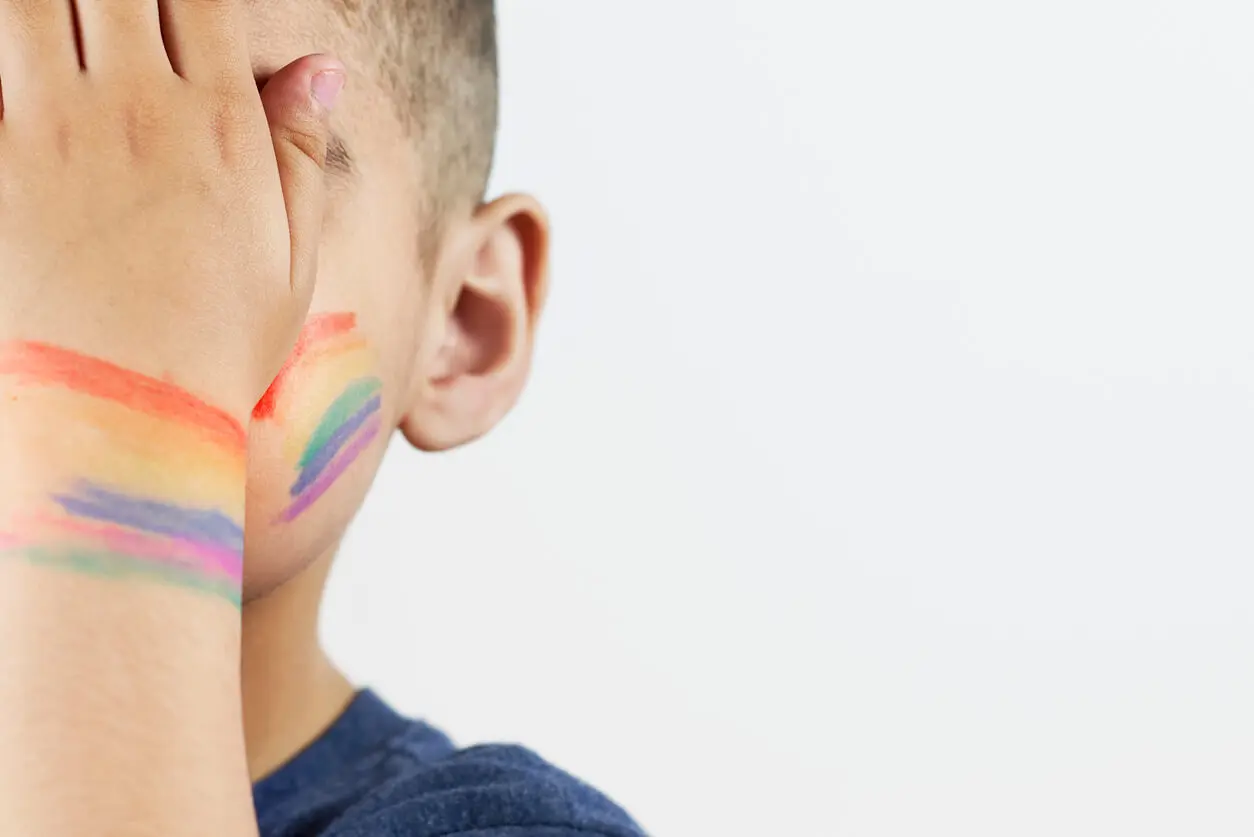Written By: Simona Jellinek, Counsel
LGBTQ2S+ Pride means many different things to many different people, but one of the most important messages this month-long celebration communicates is love – love of yourself and love for each other in all our diversity.
For a community that has been historically marginalized and suffered (and still suffers) a great deal of hate from some parts of society, feeling the power of love during Pride can be restorative and nourishing to the soul.
Unfortunately, many members of the LGBTQ2S+ community have (or will at some point in their lives) experience sexual abuse and/or sexual assault – about as opposite to love as it gets. In this two-part blog series, I’d like to discuss why this type of sexual violence affects how members of the LGBTQ2S+ community see and think about themselves. This first blog post will focus on trauma from childhood sexual abuse. Later this month I’ll turn to members of the community who experience sexual assaults as adults.
Drawing on the outpouring of love during Pride month as inspiration, I conclude by highlighting some positive changes our community is seeing with respect to how people and institutions are responding to these crimes. I also suggest some ways survivors of sexual abuse and assault can begin to heal from these traumas.
Identity issues
Our community is defined by issues of sex. Much of the work that LGBTQ2S+ advocates and their allies have done in the past decades has been centered on helping our community feel good about their sexual identity and sexuality. With so much hate and ignorance about sexual and gender diversity, working on helping LGBTQ2S+ individuals simply being content and comfortable with who they are is a big project.
Discussions about sexual violence and sexual crimes may be seen by some people as detracting from positive messaging – especially if other members of the community perpetrated any of these acts. If survivors are discouraged from talking about what happened to them (particularly in otherwise safe LGBTQ2S+ spaces), sexual abuse and/or assault takes an already marginalized community and makes it more marginalized.
Part of the complexity here is the question of identity. In a heteronormative world, the expectation is that a child will grow up to be straight and as they reach sexual maturity, most messaging they hear will confirm or reconfirm they are “normal.” For people who find themselves outside this category, it’s only natural for them to wonder why. Until these young people understand that they are normal too and that it’s exclusionary heteronormativity in society that is not normal, it will make it more difficult for young LGBTQ2S+ people to feel positive about their identity and accept that their sexuality and gender identity is natural and normal.
If a person suffered/suffers from childhood sexual abuse, regardless of the gender of the abuser, they may ask themselves, “Am I LGBTQ2S+ because of this?” Psychology and science do not back up the idea that a person who was abused as a child will grow up to be gay.
Survivors may also internalize the abuse. I’ve had clients who tried to rationalize what happened to them by saying things like: “I was an effeminate boy, so maybe I wanted it” or “I always knew I was gay, so maybe I wanted it at 7.” This is absolutely untrue. No one can offer any type of consent at this age, nor should a child’s gender expression, clothing, or anything else they do be considered to indicate they want this type of abuse.
LGBTQ2S+ myths
Unfortunately, there appears to be a concerted and renewed effort among some elements of society to promote myths about sexual abuse and the LGBTQ2S+ community. The particularly insidious narrative of “grooming” put forth by anti-gay groups and amplified in certain media has wrongly suggested that childhood sexual abuse is predominantly perpetrated by LGBTQ2S+ people as some sort of recruitment method.
Numerous studies have repeatedly found that LGBTQ2S+ people are not any more likely than heterosexuals to commit childhood sexual abuse. In fact, research by A. Nicholas Groth suggests there tend to be two types of child molesters: fixated and regressive.
A fixated child molester cannot be categorized as either heterosexual or LGBTQ2S+ because the child molester tends to find adults of either gender repulsive. The regressive child molester tends to have sexual attraction to adults but may “regress” to sexual attraction to children under certain circumstances. Groth found that most of these sex offenders were otherwise involved in heterosexual relationships.
Irresponsible amplification of these myths can compound the harm done to all childhood sexual abuse survivors, but particularly members of the LGBTQ2S+ community who may already be struggling with marginalization, discrimination, and stigma.
Providing hope
When I hear my clients describe their anguish as they navigated their developing sexual identity while processing the sexual abuse that had been done to them, I empathize. Growing up is hard enough without the added burden of this kind of trauma – especially if they did not disclose the abuse until later and were managing its fallout on their own.
Thankfully, there are many ways to help these survivors recover from these horrific crimes. And, it is never too late to seek help or benefit from it.
While our practice primarily pursues civil actions against abusers (both individuals and negligent or complicit institutions) as a survivor’s legal representative, the team at Jellinek Ellis Gluckstein always provides full-circle care to our clients. This includes connecting them with resources or supports that can assist with other aspects of their healing journey.
If
you’re a childhood sexual abuse survivor and you would like to know more about
how our law firm can help you, please contact Jellinek Ellis Gluckstein
Lawyers. We will be there to listen.

